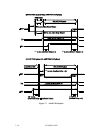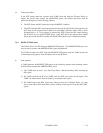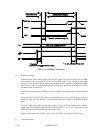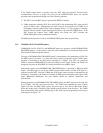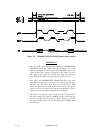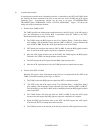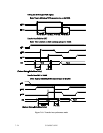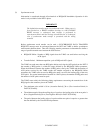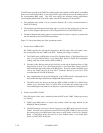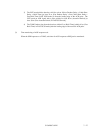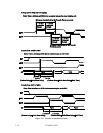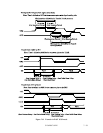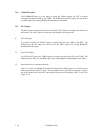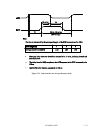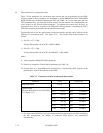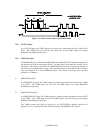7 - 26 C156-E097-01EN
The INIT must respond to the TARG by sending as the same number of ACK pulses as the REQ
pulses received from the TARG. It can send an ACK signal when it receives the leading edge of
the corresponding REQ signal. The INIT must satisfy the following timing requirements
concerning the transmission of the ACK signal at the SCSI connector pin on the INIT:
• The minimum pulse width is 90 ns (Assertion Period) [30 ns (Fast Assertion Period) in
FAST SCSI mode].
• The minimum period between the trailing edge of a pulse and the leading edge of the next
pulse is 90 ns (Negation Period) [30 ns (Fast Negation Period) in FAST SCSI mode].
• The period between the leading edges of a pulse and the next pulse is equal to or greater than
the time defined by the Transfer Period parameter.
Figure 7.11 shows the timing rule of the synchronous mode.
a. Transfer from TARG to INIT
The TARG specifies the data transfer direction by the I/O signal. If the I/O signal is true,
data is transferred from the TARG to the INIT. Transfer processing is as follows:
1) The TARG sends an REQ pulse at least 55 ns (Deskew Delay + Cable Skew Delay) [at
least 25 ns (Fast Deskew Delay + Fast Cable Skew Delay) in FAST SCSI mode]after
sending valid data on the data bus (DB7 to DB0, P).
2) The data on the data bus must be held valid for at least 100 ns (Deskew Delay + Cable
Skew Delay) [at least 35 ns (Fast Deskew Delay + Fast Cable Skew Delay) in FAST
SCSI mode after the leading edge of the REQ pulse. The pulse width of the REQ signal
sent by the TARG must be at least 90 ns (Assertion Period) [at least 30 ns (Fast
Assertion Period) in FAST SCSI mode.
3) After compensating for the period defined in 2, the TARG transfers subsequent data in
bytes within the range defined by the REQ/ACK Offset parameter.
4) The INIT receives the data on the data bus (DB7 to DB0, P) within 45 ns (Hold Time)
[within 10 ns (Fast Hold Time) in FAST SCSI mode] after the leading edge of the
received REQ pulse and sends an ACK pulse to report the completion of reception.
b. Transfer from INIT to TARG
If the I/O signal is false, data is transferred from the INIT to the TARG. Transfer processing
is as follows:
1) TARG sends REQ pulses to request data transfer within the range defined by the
REQ/ACK Offset parameter.
2) The INIT transfers one byte of data in response to each REQ pulse received from the
TARG. The INIT sends valid data on the DATA BUS (DB7 to DB0, P) after receiving
the leading edge of the REQ pulse, then sends an ACK pulse at least 55 ns (Deskew
Delay + Cable Skew Delay) [at least 25 ns (Fast Deskew Delay + Fast Cable Skew
Delay) in FAST SCSI mode] later.



